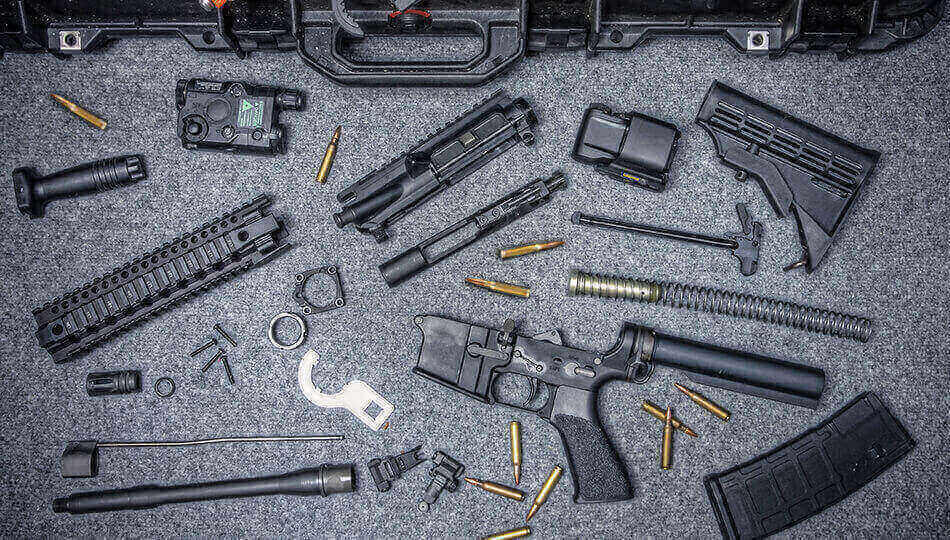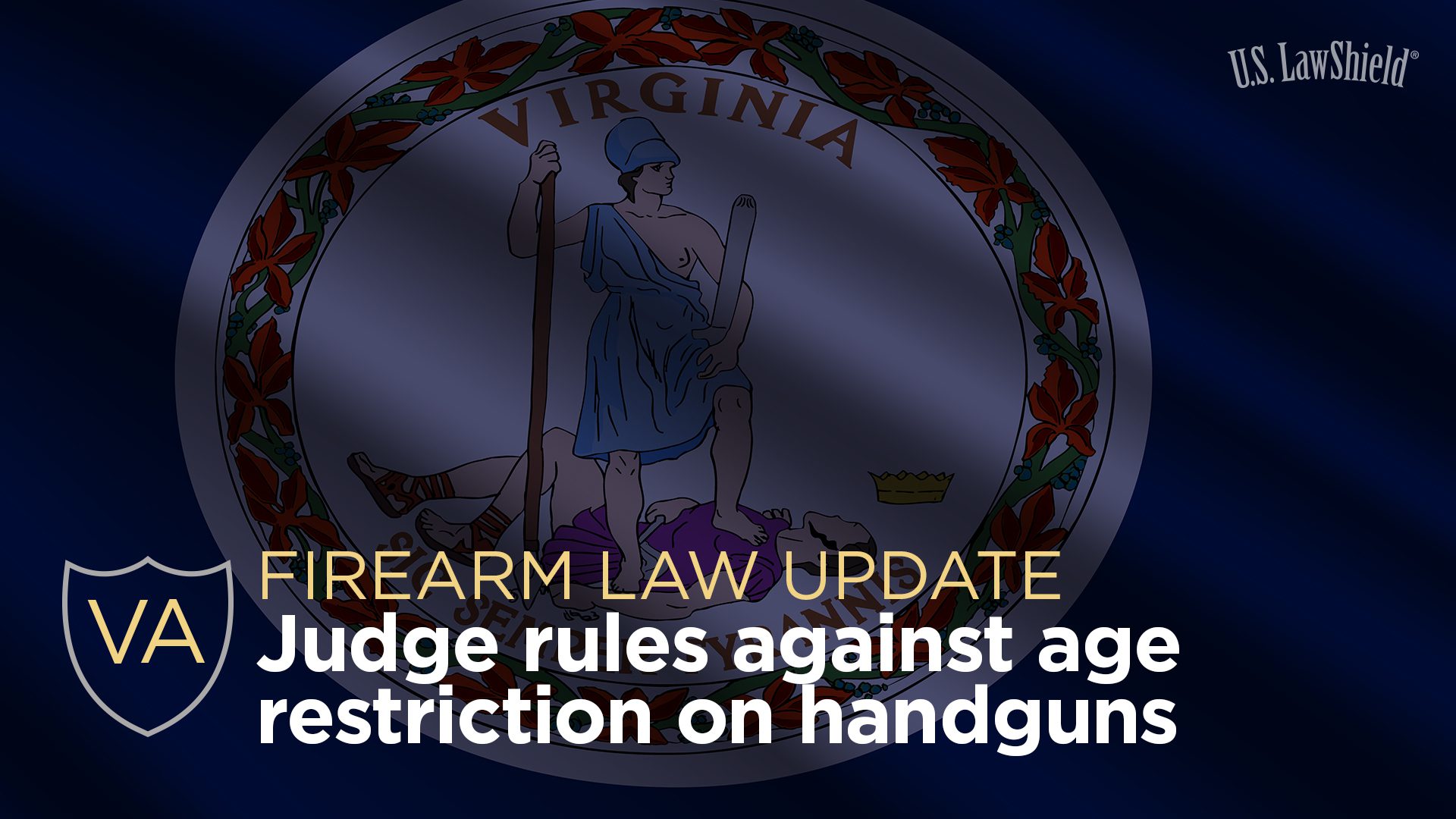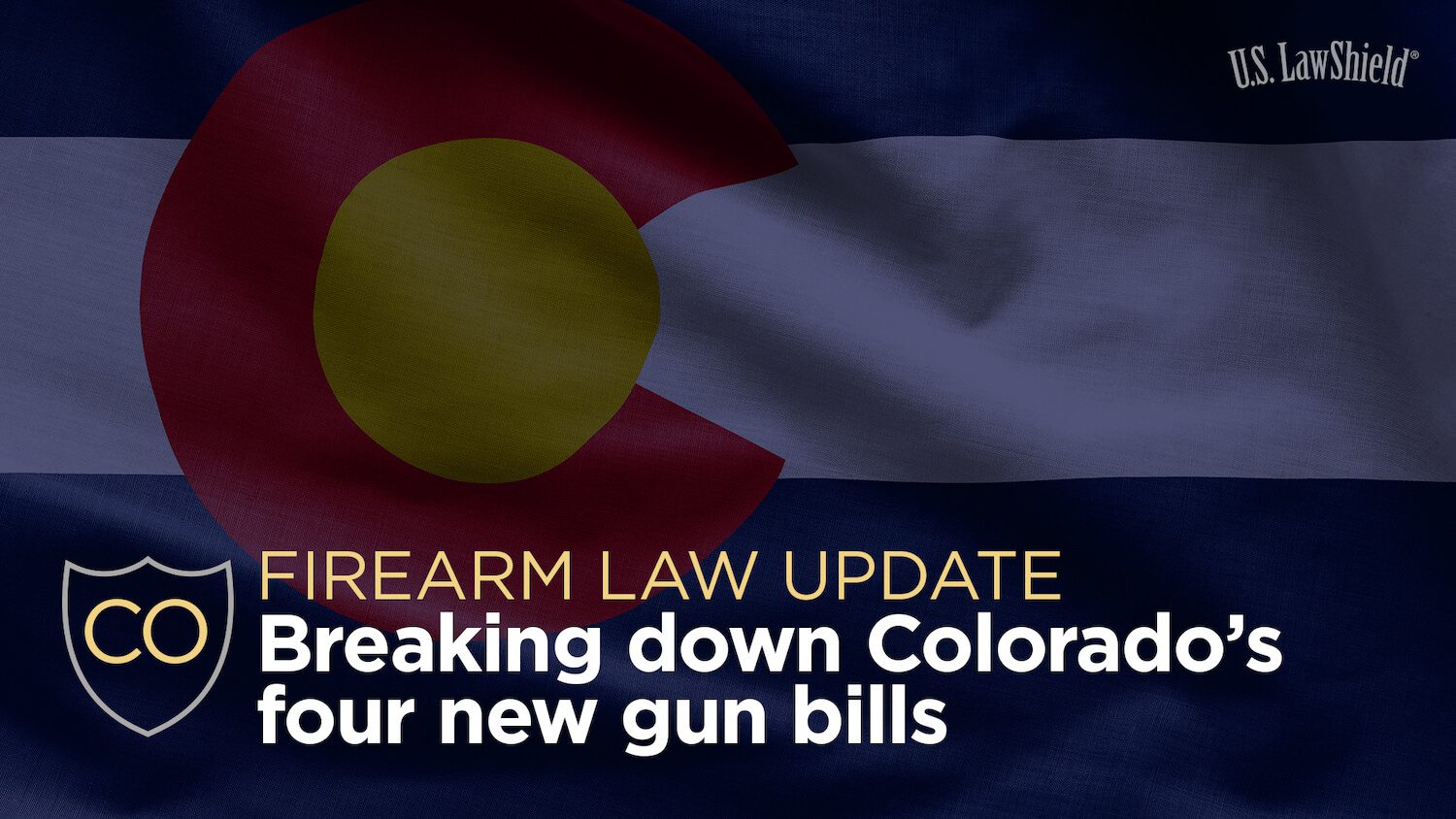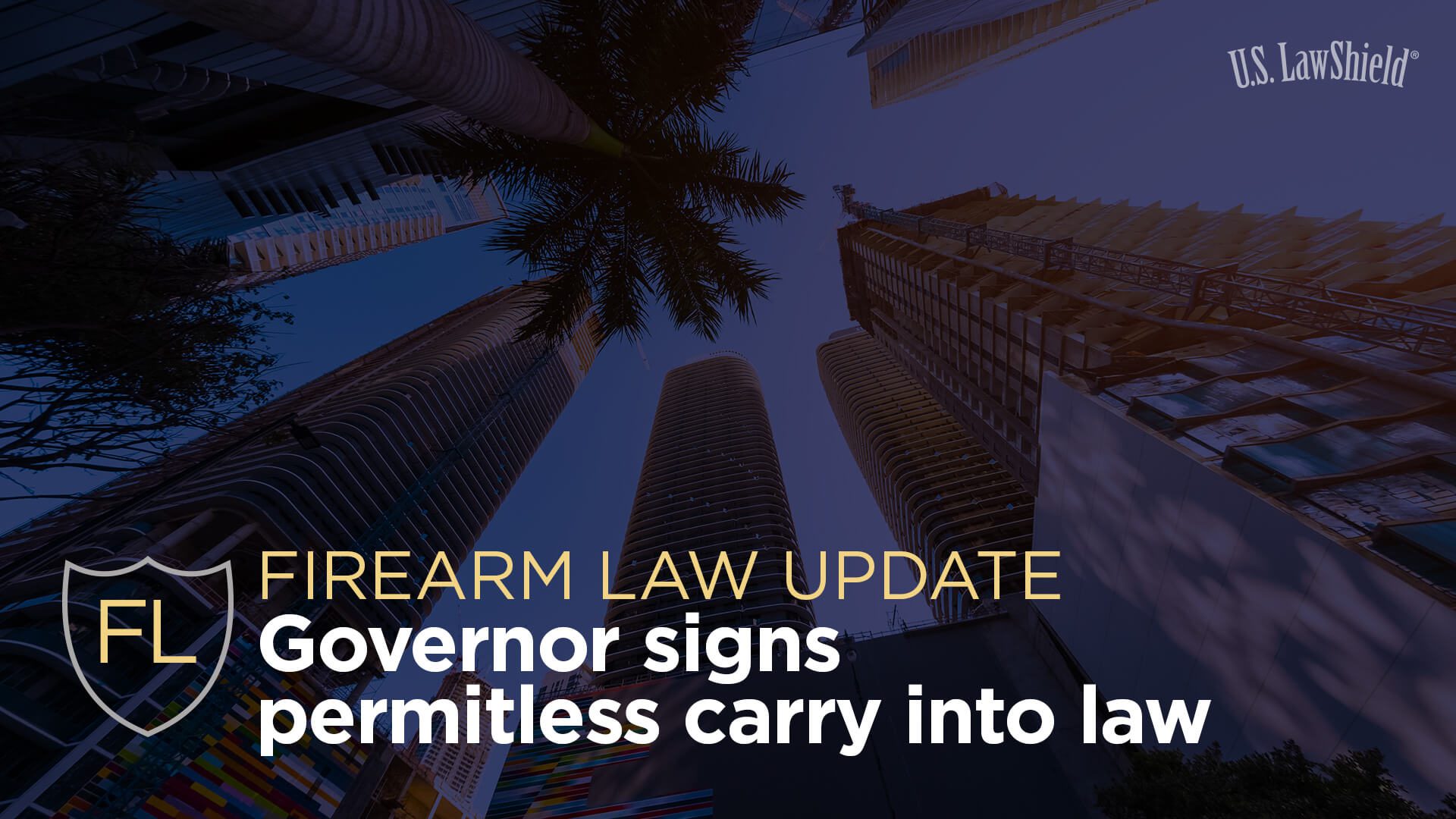
There’s a lot of gun terminology out there, and it can be overwhelming hearing it used. To help you expand your gun language skills, we’ve put together this guide of words and terms you should know about the AR-15. After all, it’s a popular platform, so why not get to know it better?
A2 Style front sight: The classic, original-style front iron sight on an AR-15. From the side it has an “A” shape. This iron sight mounts atop the rifle’s gas block, but there are replica styles available that look the same but mount to the rifle’s handguard. It’s commonly used on AR-15 rifles with carry handles and fixed rear sights.
Action: The part of a firearm that controls functions such as loading, firing, extracting, and/or ejecting ammunition. There’s more than one type of firearm action.
Aperture sights: Typically used on long guns, these are sights with a circular rear sight with a hole in its center – the aperture – and a front post sight. Sometimes also referred to as peep sights.
AR-10: The AR-10 is a semi-automatic rifle that was created before the AR-15 and is designed to be chambered in larger cartridges. It’s often thought of as the platform used for 308 Winchester, but it’s also available in cartridges such as 6.5 Creedmoor, 260 Remington, and 300 Winchester Magnum. The “AR” stands for “ArmaLite Rifle.”
AR-15: A lightweight, semi-automatic rifle most commonly chambered in 223 Remington or 5.56x45mm NATO. The AR-15 was designed by Eugene Stoner in the 1950s; Stoner created the early version of the gas system the riflewould use in 1953 and began work on the platform itself around 1956. He ended up selling rights to the AR-15 design to Colt in 1959, leaving Colt as the only firearms manufacturer that can sell the guns labeled as AR-15s, despite it being used as a general term for the platform itself. The “AR” stands for “ArmaLite Rifle.”
ArmaLite Rifle: See AR-15 and AR-10.
Armorer’s wrench: A tool used for building or maintaining AR-15s. These wrenches have a number of cutouts designed to fit parts such as castle nuts and muzzle devices. All armorer’s wrenches won’t fit all parts, so it’s important to check to confirm the wrench you’re considering will work with the components on hand.
Barrel: A metal tube manufactured from various types of metal with varying finishes in different sizes that’s designed to have a bullet fired through it.
Barrel nut: A circular, threaded nut that screws onto the upper receiver of an AR-15 for the purpose of attaching the breech end of the barrel and gas tube. Used with free-floating handguards.
Bipod: An upright, two-legged prop, often with adjustable height, used as a rest for the forward portion of a gun for stability while shooting. Also known as “shooting sticks.” Also manufactured as a tripod, or three-legged, design.
Bolt: A tubular, metal mechanism containing the firing pin, extractor, and sometimes the ejector. The bolt face – the end facing the muzzle of the firearm – is the part that holds the base of a cartridge when the gun has a round chambered.
Bolt carrier: A hollow, metal tube made to encase the bolt of an AR-platform firearm. Different manufacturers produce varying styles of carriers such as the traditional solid, metal tube or a skeletonized style.
Bolt Carrier Group (BCG): Includes the bolt, firing pin, bolt carrier, and other small parts. The BCG performs functions like cycling rounds of ammunition and striking the primer on rounds so they fire.
Box magazine: A detachable, slim, rectangular magazine used with AR-15s. They can be manufactured from plastics or metals and have varying capacities ranging between 5 and 30 rounds, although there are even larger box magazines on the market as well. This type of magazine is the most common one for AR-15s and the style that ships from the factory with the gun itself.
Breech: The rearward portion of firearms; specifically, described as the end of the barrel opposite the muzzle. This is where the term “breech-loading” comes from; these firearms are loaded from the rear of the barrel which differs from muzzleloaders which are loaded through the muzzle. Most modern firearms are breech-loaders, although they do differ in configuration from the original breech-loaders.
Buffer: An enclosed tube containing weights that rests inside the coils of the buffer spring, which is located within the buffer tube. The buffer itself is designed to absorb energy from the bolt carrier group that’s created during live fire. In addition, the weight helps the bolt carrier return to its in-battery, forward position while mitigating felt recoil for the shooter. Rifle buffers are longer and heavier than carbine buffers, and there are different weights for varying applications depending on caliber, among other factors.
Buffer tube: The hollow tube found at the back of an AR-platform gun that holds the buffer weight and buffer spring.
Buffer spring: The spring located in the buffer tube of an AR-15. It’s compressed by the buffer during live fire, creating resistance and assisting the bolt in returning to a forward position. There’s more than one length and type of buffer spring; for example, braided, round, or flat wire and different numbers of coils depending on the specific configuration of the gun.
Butt: The base of the stock of a rifle.
Caliber: Refers to the diameter of the bore of the barrel and also the size of bullet the gun is chambered in.
Carbine gas system: On AR-15s there are a number of gas system lengths, each with specific applications. The length of the gas tube must match the length the barrel is designed to use. Carbine gas systems have ports approximately seven inches from the chamber. Typically used on barrels between 10 and 18 inches in length.
Castle nut: A screw-on component used on AR-platform firearms to lock the buffer tube and end plate into the lower receiver of the firearm.
Chamber: The part of a firearm where a cartridge is loaded so the gun can be fired.
Charging handle: The T-shaped handle on an AR-15 located in the upper receiver that’s used to pull the bolt back to load a round of ammunition into the chamber, remove spent brass from the chamber, or lock the bolt open to show clear.
Compensator: A device that connects to the threaded barrel on the muzzle of a gun for the purpose of reducing felt recoil and muzzle rise which, in turn, should improve accuracy and target re-acquisition.
Delta ring assembly: This includes the delta ring, snap ring, and weld ring. Secures the barrel assembly to the upper receiver. Unlike free-floating handguards, which use a barrel nut, delta rings hold the barrel assembly in place through pressure applied from the weld spring. Typically used on retro builds with plastic handguards, not for use with free-floating handguards.
Direct Impingement gas system (DI): The system originally designed by Eugene Stoner for the AR platform. This system operates by allowing gases generated by the propellant to escape through a hole in the barrel, where it’s then funneled through the gas tube. Next, the gas impinges on the bolt carrier, making the gun cycle.
Drop-in trigger: A one-piece trigger system contained in an aluminum cassette that can be dropped into the lower receiver of an AR-15 and fastened in place with two trigger pins rather than needing to have every individual spring and part fit together.
Drop-in quad rail handguard: An easy-to-install handguard design that’s held in place by a delta ring and front sight post. Doesn’t require gunsmithing skills. Not for use with free-floating handguards. “Quad” refers to the fact this style of handguard has four rails, one on each side. Usually they’re Picatinny rails, but sometimes Weaver.
Drum magazine: A magazine with a cylindrical base designed to hold far more rounds of ammunition than a basic box magazine.
Dust cover: A small, hinged piece of metal that covers the chamber/ejection port of an AR platform rifle when closed.
Ejection port: The open section in an AR-15’s receiver meant for spent brass to eject through during live fire. The majority of firearms are designed with right-sided ejection ports but there are some left-side ejection ports on the market made for left-handed shooters or shooters working on shooting mirror (meaning they’re honing skills on what is typically their support side; for example, a right-handed shooter running a gun on their left side).
End plate: A component of an AR platform rifle with a ring that fits over the buffer tube and a solid, rounded portion at its base that fits to the lower receiver and holds a detent pin and spring in place so the firearm will function properly.
Finish: The type of coating, or lack thereof, on a firearm.
Firing pin: A component of an AR-15 located in the bolt, in the upper receiver, that strikes the primer of a loaded round of ammunition which, in turn, sends a bullet down the barrel of the firearm.
Enjoying this content? Find out how you can get more sent straight to your inbox!
Flash hider: A muzzle device that attaches to the barrel of a firearm for the purpose of making the flash created by firing the firearm less visible. Also sometimes called a flash suppressor, flash guard, or flash hider.
Foregrip: A vertical grip made of a type of plastic or metal placed on the underside of the forward portion of the handguard of an AR platform rifle to provide a secondary option of where to hold the firearm with your support hand.
Free Floating Handguard: This style of handguard attached to the upper receiver using a barrel nut. It takes more knowledge to install than a fixed design with a delta ring, but it’s not difficult to install. This design doesn’t touch the barrel at any point, meaning the barrel’s natural vibrations aren’t affected or hindered by external pressure which improves accuracy.
Front sight: A post or bead located at the muzzle end on the uppermost portion of an AR-15’s barrel or handguardthat’s used in conjunction with the rear sight for accurate shots.
Front sight taper pin: On an A2-style iron front sight, two of these pins hold the base of the sight securely to the barrel assembly.
Gas block: This fits over the barrel and rests atop a small hole—the gas port—and functions to return escaping gases to the upper receiver for the purpose of cycling the bolt.
Gas piston system: This system was originally designed by Mikhail Kalashnikov for AK-style rifles. It differs from direct impingement systems because instead of using a gas tube to funnel escaping gases back to the receiver, the gas travels down the barrel to the gas block where it pushes a piston back into the receiver, which cycles the bolt.These systems are heavier than direct impingement and there are more moving parts in a gas piston system.
Gas tube: A narrow, hollow tube of varying lengths. One end inserts into the barrel nut and receiver, and has an open mouth; the other end is rounded, closed and inserts into the gas block, but has a tiny hole to funnel escaping gases from the gas block back into the receiver.
Gas tube roll pin: A tiny pin that attaches the gas tube to the gas block. For proper installation, it’s wise to use a pin punch and non-marring hammer.
Handguard: A component made of a type of metal or plastic that covers the length of the barrel to varying degrees, protecting the shooter’s hands from the heat generated by live fire, and giving shooters a method by which to mount optics, lights, and lasers to their rifles. There are many different kinds of handguards on the market including retro plastic drop-in and free-floating styles.
KeyMod: A modular system designed in 2012 through a collaborative effort between Vltor Weapons Systems® and Noveske Rifleworks®. Created to allow accessories, including lengths of Picatinny rail, to be directly mounted to the rail by way of holes shaped somewhat like old-fashioned keyholes. This is an open-sourced design, meaning companies don’t need to get a license from the creators to use it.
Low-profile gas block: A gas block designed to be as small as possible, so its height doesn’t stop certain free-floating handguards from being installed.
Lower receiver: The lower portion of the receiver set of an AR-15. The lower contains the trigger assembly, safety, and takedown pins and attaches to the buffer tube and stock. It’s securely affixed to the upper receiver by the takedown pins.
M-LOK: A modular system designed in 2014 by Magpul Industries®. Designed to work better with aftermarket accessories that aren’t metal; for example, the many polymer pieces made by Magpul. Easily recognizable by the elongated, rectangular shape with rounded edges. This is a free-licensed system, meaning companies must obtain a license from Magpul to use it.
Mid-length gas system: A gas system with a gas port approximately 9.5 inches from the chamber. Used on barrelsbetween 14 and 20 inches long.
Muzzle brake: A device that attaches to the threaded muzzle end of the barrel for the purpose of redirecting escaping gases to reduce recoil and muzzle rise while improving accuracy. Some designs can be tuned for even greater precision while shooting. There are numerous models on the market with different shapes and specific purposes. The threading and caliber of the barrel must match that of the muzzle device.
Picatinny rail: Also known as the MIL-STD-1913, this rail is a standardized system made up of evenly-spaced brackets used to mount accessories to a rifle. The brackets are undercut into an approximate T- shape that’s streamlined and flattened with hexagonal edges to better secure items to the rail. These rails can be purchased as aftermarket pieces that mount to KeyMod or M-Lok but are frequently part of a rifle’s factory design. On some upper receivers and handguards, the rail is something only located at the receiver and may or may not include a short portion at the muzzle end. Full-length Picatinny rails extend from the far end of the receiver all the way to the muzzle end of the handguard and are highly useful for differently-sized optics and lights.
Pistol grip: A component that attaches to the rearward, underside portion of the lower receiver of an AR-15. It’s gripped by the shooter using their strong hand—or trigger hand, if shooting mirror—and used to stabilize the rifle and pull the stock back into the shooter’s shoulder. Usually made from a type of plastic, although there are aluminum and wooden styles.
Pistol length gas system: A gas system with a gas port approximately 4 inches from the chamber. Typically used with barrels under 10 inches in length.
Pivot pin: The pin located at the forward portion of the lower receiver that must be pushed out so the upper and lower receivers can pivot open. Often referred to as one of the takedown pins, but technically speaking there’s only one takedown pin—the pin located at the rearward portion of the lower receiver.
Quad rail handguards: Designs with rails on each side of the handguard for a total of four surfaces to attach accessories to, such as lights, lasers, and optics. May be Picatinny or Weaver rails.
Rear sight: A sight located at the rearward end of the upper receiver of an AR-15. There are many designs including flip-up and folding. The rear sight works with the front sight so the shooter can take an accurate shot. The two sights need to be a set that function on the same line of sight and height to work properly, which is why it’s best to use a set rather than attempting to mix and match.
Rifle length gas system: A gas system with a gas port approximately 12 inches from the chamber. Typically used with barrels longer than 18 inches.
Stock (Collapsible): A buttstock for an AR-15 that isn’t fixed permanently into a single position, but instead can be adjusted for height and/or length.
Stock (Fixed): A buttstock for an AR-15 that’s restricted to a single length.
Takedown pin: The pin located in the lower receiver that’s pushed out to separate the upper and lower receivers.There are two pins that serve this function, but technically speaking, the rearward pin is the takedown pin and the forward pin is the pivot pin. The two aren’t interchangeable.
Trigger: The bladed mechanism that activates the action of an AR-15 so it can fire. There are many kinds of triggersavailable from standard MIL-SPEC curved aluminum blade to drop-in cassette models with interchangeable trigger shoes.
Upper receiver: The uppermost portion of the receiver set of an AR-15 that contains parts such as the bolt carrier group and attaches to the barrel assembly. It’s securely affixed to the lower receiver using the takedown pins.
Weaver rail: This rail was designed by William Ralph Weaver before the Picatinny rail. The slots are differently shaped and spaced than those of a Picatinny style. As a general rule, accessories made for Picatinny rails fit on a Weaver rail, but not vice versa.
AR-15 Words and Terms Frequently Asked Questions
The information provided in this publication is intended to provide general information to individuals and is not legal advice. The information included in this publication may not be quoted or referred to in any other publication without the prior written consent of U.S. LawShield, to be given or withheld at our discretion. The information is not a substitute for, and does not replace the advice or representation of a licensed attorney. We strive to ensure the information included in this publication is accurate and current, however, no claim is made to the accuracy of the information and we are not responsible for any consequences that may result from the use of information in this publication. The use of this publication does not create an attorney-client relationship between U.S. LawShield, any independent program attorney, and any individual.




Leave A Comment